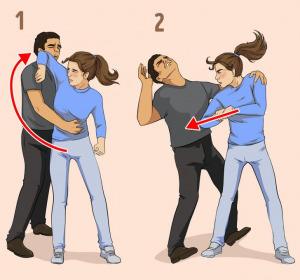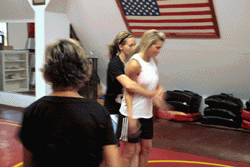In Memphis, the first Friday in September started as a typical summer’s day. At 4 a.m., the sky was a pitch-black blanket sprinkled with dwindling stars, yet the air was already dense with the oppressive moisture that Tennesseans know too well. Eliza “Liza” Fletcher, a 34-year-old teacher, mom, and dedicated runner, pulled on her bright-colored shorts and tank top, then stepped outside into the darkness for her regular morning run.
That run, as we now know, would be her last one.
The same morning, a 38-year old man – whose name hardly deserves to be uttered – also set out into the Memphis humidity himself, not by foot but in a dark-colored SUV. Soon, as video surveillance would vividly show, the man pulled up to Fletcher, forced her into his vehicle, and slipped away into the still of twilight.
The body found in Memphis has reportedly been identified as Eliza Fletcher, the woman abducted while jogging https://t.co/mVQQGX8x2C pic.twitter.com/FlrA1DWR80
— philip lewis (@Phil_Lewis_) September 6, 2022
Fletcher’s body was discovered behind a vacant duplex the following Monday, her clothing stained with her likely murderer’s DNA. An undeniably accomplished and beloved young woman, Fletcher will never have the chance to finish her life story, just as she never had the chance to finish that morning run.
Sadly, the tragedy is an all-too-familiar one. Fletcher’s case is hauntingly redolent of so many other female runners who ventured out alone and never made it home safely. In 2019, 35-year-old Wendy Martinez was fatally stabbed during a nighttime run through Logan Circle, a well-lit neighborhood of Washington, D.C. A year before, in 2018, 20-year-old Mollie Tibbetts was abducted and killed during an evening run in rural Iowa. Even in broad daylight, women have met the same horrific fate: in 2017, 27-year old Vanessa Marcotte disappeared on a clear Sunday afternoon in Massachusetts. Her naked, lifeless body was later discovered in the woods.
If you’ve read enough of my articles on Monet, you know that I, too, am a runner. I could rave about running all day. It’s not just a hobby; it’s an identity. It’s not just a sport; it’s a sanctuary. Running is truly a home for my psyche, a palace in nature that soothes my soul. When I’m running, I feel free. I feel safe. I feel euphoric and whole.
At least, I used to.
I realize that the chance of being killed while out running – or walking, or hiking – is still exceedingly low. An article in Runner’s World cited this statistic: A woman between ages 16 and 44 has just a 1 in 35,336 chance of being a victim of homicide at any time. The chance of being the victim of a random homicide is even lower, as most female victims are killed by someone they know, not a complete stranger lurking in the shadows. Still, the same Runner’s World article also published these alarming statistics: According to survey data, 43 percent of women have been harassed while on a run, 30 percent have been followed, 18 percent have been sexually propositioned, and 3 percent have been “grabbed, groped, or otherwise physically assaulted.”
Male runners may be shocked to learn how often women are #HarassedMidrun. Female runners have come to expect it. https://t.co/IBGm3pCE13 pic.twitter.com/FFy4S2upMy
— Runner’s World (@runnersworld) October 27, 2016
When you run for long enough, and in enough different places, you will become many of these women. I have been all of these women.
How To Stay Safe On The Walk Or Run
Six months ago, I wrote an article on the best safety tips for running or hiking alone. That advice, mostly preventative, still stands: ditch the high-volume headphones, carry handheld tools like alarms and pepper spray, share your live location, and change up your route often so it’s more difficult for others to follow you. Most importantly, keep your head on a swivel at all times.
But as Fletcher’s shocking murder rekindles widespread concerns about female running safety, it also serves as a nauseating reminder: You can meticulously follow every single safety tip and still find yourself cornered by a predator.
What would you do if you suddenly became that woman, trapped at the intersection of fight, flight, or freeze? What if, through no fault or negligence of your own, you found yourself in a position where your best or only choice was to fight?
The Best Self-Defense Moves For Women
Here’s a statistic that’s more promising than chilling: According to a series of women’s self-defense studies conducted by the University of Oregon, women who complete a self-defense course are 50 to 60 percent less likely to be a victim of rape, and 33 percent less likely to be a victim of attempted rape, than those without self-defense skills. As the research also points out, women who use self-defense techniques do not increase their likelihood of injury during an attack – more often than not, they actually reduce their risk of injury when they resist a predator with proper self-defense moves.
All this means is that, if you haven’t already, you should enroll in a self-defense course right away – especially if you frequently walk or run alone. If money is an issue, The Penny Hoarder offers a number of tips for finding a free self-defense class either in person or online. But in the meantime, I wanted to compile a list of basic, beginner-friendly self-defense moves that every woman (and person) should know. To do this, I asked Kevin Harris, a certified personal trainer and long-time karate instructor, to divulge his top self-defense techniques.
Here are the top three self-defense moves we should all be practicing now, according to Harris:
The Groin Kick
“If you are being attacked, try to avoid the chest and knees, and instead, go for sensitive areas that are going to hurt, like the groin, throat, nose or eyes,” Harris says. Here’s how to perform one such move, the groin kick:
-
Try to stabilize your body.
-
Lift your dominant leg and begin to move your knee upwards.
-
Extend this dominant leg, push your hips forward, lean back slightly, and kick forcefully to the groin area of your attacker.
“However, if your attacker is standing too close to you, then you need to thrust your knee so it hits their groin,” Harris points out. “Just make sure you’re stable enough that you won’t fall in the process.”
The Elbow Strike
“If your attacker is standing too close to you and you cannot kick, punch, or are at risk of falling if you use your knees, then you need to use your elbows,” Harris explains. Here’s how to perform a basic elbow strike:
-
Stand with strong legs and a strong core.
-
At the elbow, bend your arm and shift all of your weight forward.
-
Strike your elbow into the jawline, temple, chin, or neck of your attacker. (Hopefully, your attacker will lose his grip and you’ll be able to run).
If your attacker is standing behind you, you’ll need to perform the move from a different angle:
-
Lift your elbow to your shoulder while making sure you can see your attacker.
-
Using your opposite foot, pivot and rotate your hips to create more momentum.
-
Strike your attacker with the back of your elbow.
The Bear Hug Defense
When an attacker grabs you from behind, you’ll need to get low in order to break free, Harris says. Here’s how to perform the bear hug defense:
-
When caught in a bear hug, bend forward at your waist and shift all your weight forward.
-
Turn your body as best you can and perform an elbow strike to the attacker’s face.
-
From here, turn your body completely to strike the groin, or strike the face again.
-
Hopefully, escape!
The Importance Of Situational Awareness
Of course, learning these skills in a vacuum is hardly enough to keep us safe – nor should we place too much emphasis on the physical moves, points out Matt Shoup, a martial arts instructor and co-founder of Northern Colorado Jiu Jitsu. In fact, Shoup says, the best self-defense move is not a physical move at all: it’s a mental mastery of situational awareness.
“The issue with self-defense courses teaching a list of ‘moves’ is that many times, they don’t actually cover what happened before a woman was placed in danger in the first place. But 90 percent of self-defense situations can be avoided when a woman or any person is aware of their surroundings,” explains Shoup. “Maintaining and understanding your personal bubble of space and zone in which you would not allow someone to enter is critical. Knowing who is around you, and where they are at all times, is also so important.”
“I always teach students to think like a criminal and ask them, ‘If you were going to attack me, rob me, rape me, or assault me, how would you do it?’” Shoup adds. “Any good and moral person does not naturally think like this. But once you can begin to see through the eyes of the criminal, you will realize the places you are open and vulnerable to being attacked and assaulted,” he says.

Have you taken a self-defense course? What safety skills would you recommend to other women who run or walk alone? Share your thoughts in the comments below.
Keep Scrolling To Read More Health And Wellness Articles:




